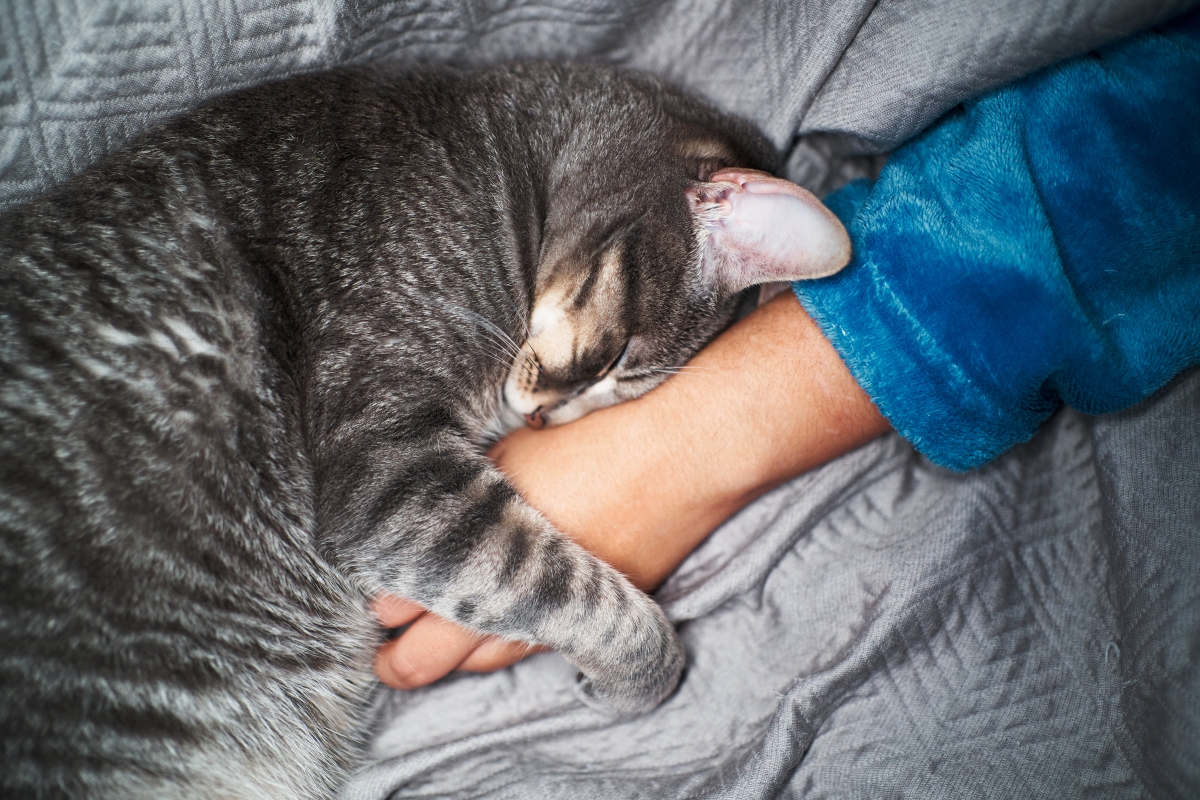References
- Hardie, EM, Roe, SC, Martin, FR. (2002) Radiographic evidence of degenerative joint disease in geriatric cats: 100 cases (1994–1997). J Am Vet Med Assoc 2002; 220:628–32
Regulatory constraints and medical practices vary from location to location. Consequently, the information provided on the site in which you enter may not be suitable for use at your location.






















Has your cat started slowing down a bit now they’re getting older? Or perhaps they prefer snoozing in the sunshine all day instead of racing around outside? Has your cat become a bit grumpy with you lately?

Many owners accept that their cats may slow down a bit as they get older, but could there be more to it than this? Cat joint pain is often harder to detect than you might think. Cats are very good at hiding signs of pain and discomfort, so we cat owners sometimes need to do some careful watching and thinking to check that our feline friends are comfortable as they age.
Cats are clever creatures, and if they want to hide something, they will. It is a natural behaviour in cats to mask signs of weakness. Cats are much more reserved than dogs or humans in how they show pain, so here are some subtle signs of arthritis in cats to look for.
rather than see a cat actively limp, it is more common for painful cats to just move less. They will spend more time sleeping or resting, and less time playing, hunting, and interacting with owners. They may go outside less or stay closer to home when they do.
when they must move about, cats with joint pain will minimise their motion. You may see hesitation before jumping up or down, and sometimes you will see them reach down with a paw to shorten the distance of a jump. They have trouble when using stairs, cat-flaps and high-sided litter trays. They may develop a stiffness to their walk, especially after resting.
many arthritic cats find it difficult to reach certain areas of their fur. Your usually well-groomed cat may develop clumped, matted patches on their coat. A common problem area is their rump and around the base of the tail. On the other hand, some cats will react to painful joints by overgrooming them, leading to sore, bald patches. Due to a lack of exercise and less time spent sharpening their claws, the claws can get long and be painful to retract.
has your usually calm cat become unusually grumpy with you? Or a grumpy cat become even grumpier? Some arthritic cats become much less happy with being handled, touched, or picked up. This is often put down to the ageing process but is actually often due to pain or discomfort. Some cats may start avoiding contact and hiding away more.
These symptoms can vary from very mild to more serious, and can come on so gradually they can be easy to miss. If any of these signs make you concerned about your cat, there is an arthritis checklist that can be helpful to see if your cat’s activity is normal.
One of the most common causes of chronic pain in cats is arthritis, especially if your cat is middle-aged or older - although arthritis can occur even in younger cats. Arthritis is a well-known condition in both humans and pets, but has only recently become more recognised in cats, mostly because they are so talented at hiding the signs. The term ‘arthritis’ is actually a term which includes a range of joint problems which get worse over time, known as degenerative joint disorders. Arthritis is caused by damage to the joint, due to an injury or wear and tear which can be made worse by obesity. The smooth, slick cartilage layer which cushions the ends of the joints becomes worn, leaving the bone ends to rub against each other. It is a progressive disease, meaning it becomes worse, and can be extremely painful. The pain from arthritis can impact much more than just mobility in your cat, also impacting their mood, social interactions, sleep and more.
Most definitely. They may be good at hiding pain, but studies looking at x-rays of cats’ joints find plenty of evidence that they suffer from arthritis. A study in 20021 found that a shocking 90% of cats over the age of 12 had evidence of degenerative joint disease in at least one joint. Two thirds of these had arthritis in limb joints, the others were affected in the spine. What’s more, about 40% of all cats show clinical signs of arthritis pain.
It has not yet been conclusively proven what causes arthritis in cats. The joint damage of arthritis progresses over time. So, although arthritis may occur even in younger or middle aged cats, arthritis is more often identified in older cats showing more severe disease.

If you are concerned that your cat is showing any of these signs, however mild, you can double-check their symptoms here. If you suspect arthritis, or you think your cat is in any pain or discomfort, seek advice from your veterinary surgeon. It can be difficult to tell what exactly is happening with your cat if only subtle changes are seen, but these can be significant in cats and impact many aspects of their lives and so a consultation with a veterinary surgeon is always recommended.